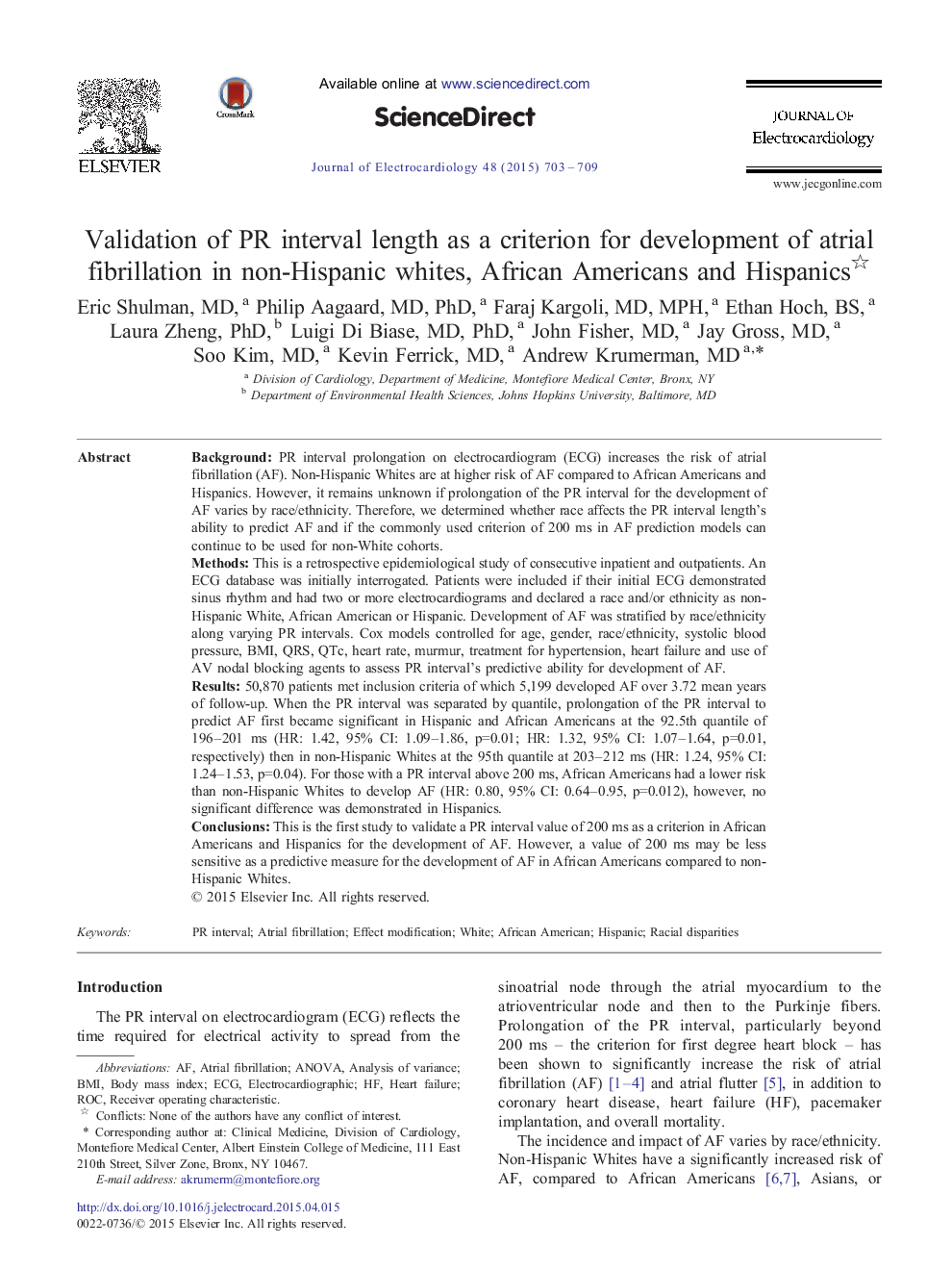| Article ID | Journal | Published Year | Pages | File Type |
|---|---|---|---|---|
| 5986307 | Journal of Electrocardiology | 2015 | 7 Pages |
â¢PR interval prolongation increases the risk of atrial fibrillation (AF).â¢PR interval prolongation and risk of AF may vary by race/ethnicity.â¢PR interval prolongation first predicts AF in Hispanics and African Americans.â¢Above 200 ms, African Americans had a lower risk than non-Hispanic Whites to develop AF.â¢200 ms may be less sensitive for AF in African Americans compared to non-Hispanic Whites.
BackgroundPR interval prolongation on electrocardiogram (ECG) increases the risk of atrial fibrillation (AF). Non-Hispanic Whites are at higher risk of AF compared to African Americans and Hispanics. However, it remains unknown if prolongation of the PR interval for the development of AF varies by race/ethnicity. Therefore, we determined whether race affects the PR interval length's ability to predict AF and if the commonly used criterion of 200 ms in AF prediction models can continue to be used for non-White cohorts.MethodsThis is a retrospective epidemiological study of consecutive inpatient and outpatients. An ECG database was initially interrogated. Patients were included if their initial ECG demonstrated sinus rhythm and had two or more electrocardiograms and declared a race and/or ethnicity as non-Hispanic White, African American or Hispanic. Development of AF was stratified by race/ethnicity along varying PR intervals. Cox models controlled for age, gender, race/ethnicity, systolic blood pressure, BMI, QRS, QTc, heart rate, murmur, treatment for hypertension, heart failure and use of AV nodal blocking agents to assess PR interval's predictive ability for development of AF.Results50,870 patients met inclusion criteria of which 5,199 developed AF over 3.72 mean years of follow-up. When the PR interval was separated by quantile, prolongation of the PR interval to predict AF first became significant in Hispanic and African Americans at the 92.5th quantile of 196-201 ms (HR: 1.42, 95% CI: 1.09-1.86, p=0.01; HR: 1.32, 95% CI: 1.07-1.64, p=0.01, respectively) then in non-Hispanic Whites at the 95th quantile at 203-212 ms (HR: 1.24, 95% CI: 1.24-1.53, p=0.04). For those with a PR interval above 200 ms, African Americans had a lower risk than non-Hispanic Whites to develop AF (HR: 0.80, 95% CI: 0.64-0.95, p=0.012), however, no significant difference was demonstrated in Hispanics.ConclusionsThis is the first study to validate a PR interval value of 200 ms as a criterion in African Americans and Hispanics for the development of AF. However, a value of 200 ms may be less sensitive as a predictive measure for the development of AF in African Americans compared to non-Hispanic Whites.
